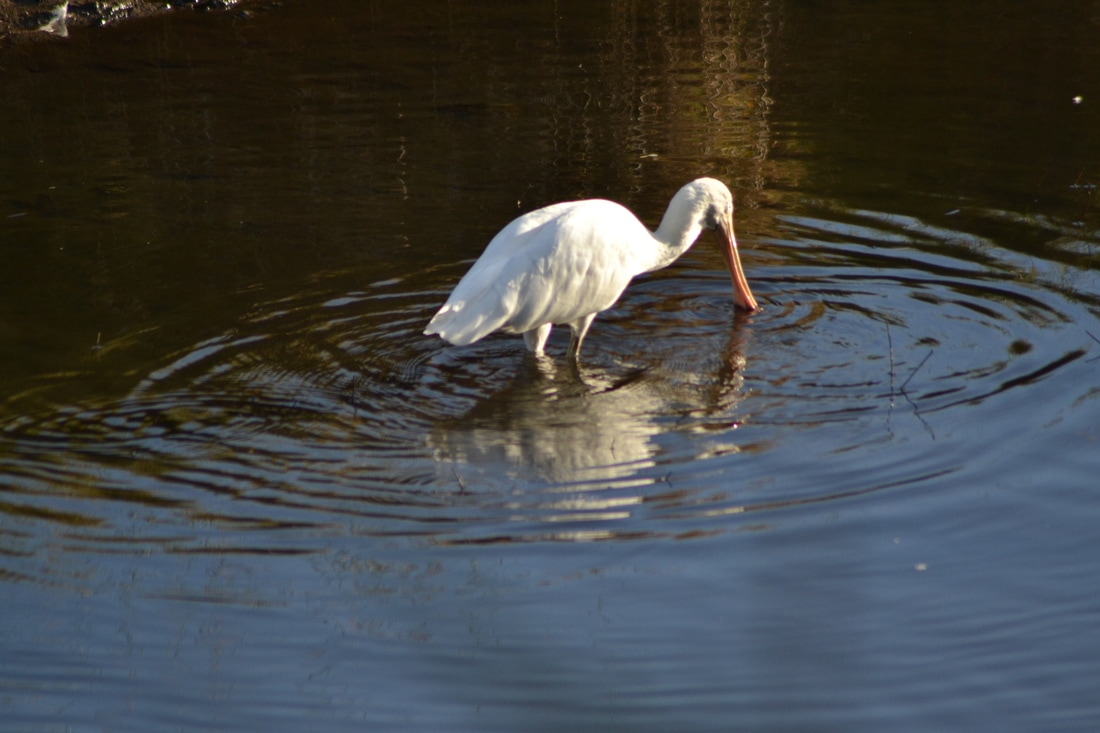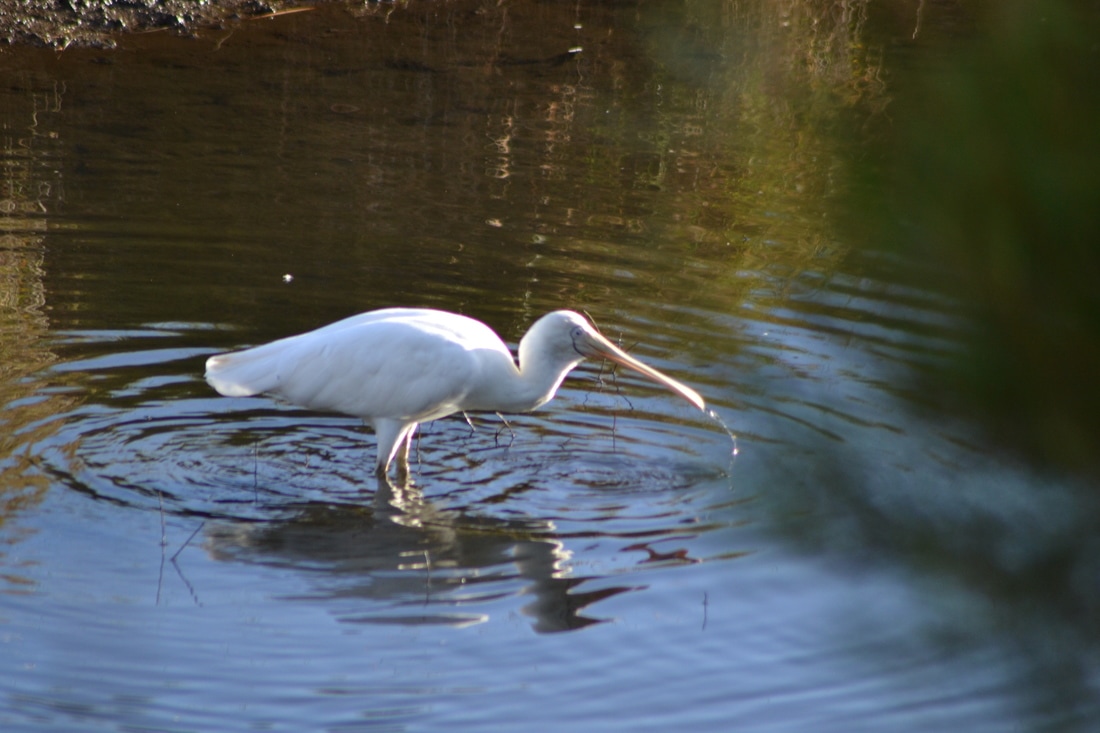Yellow Billed Spoonbill
|
Late Summer when the water level in the Big Swamp dries out the fresh water wading birds arrive. One lovely one to look for is the Yellow Billed Spoonbill. It’s a large white bird with yellow legs and a distinctive long spoon shaped bill. Its featherless face is outlined in black. During the breeding season it has spiky white plumes on its chest and its face can be pale blue. It is mostly a solitary bird but in winter it gathers along with groups of Ibis, Herons and Egrets.
Spoonbills have an advantage over other waders who have to stand motionless to see through the water for prey. It has vibration sensors in its bill which detect movement from larvae, molluscs and fish so it doesn't need to see. Just as well as it walks through the water stirring up mud and sweeping its bill from side to side. Another advantage is the sensors also enable it to feed at night. They nest in trees above water or in reed beds returning to the same nesting site and vigorously defending their territory. The male collects sticks and reeds and the female builds the nest into an untidy platform. She lays up to four eggs which take about fourteen days to incubate, both birds share incubation and feeding the chicks until they leave the nest at about four weeks. The young stay close to the parents until they become independent feeders. Yellow Billed Spoonbills are widespread across Australia wherever there is shallow fresh water, so can be seen at swamps, lagoons and farm dams. Seeing them at Big Swamp means that the water quality is good with a plentiful supply of food. |


